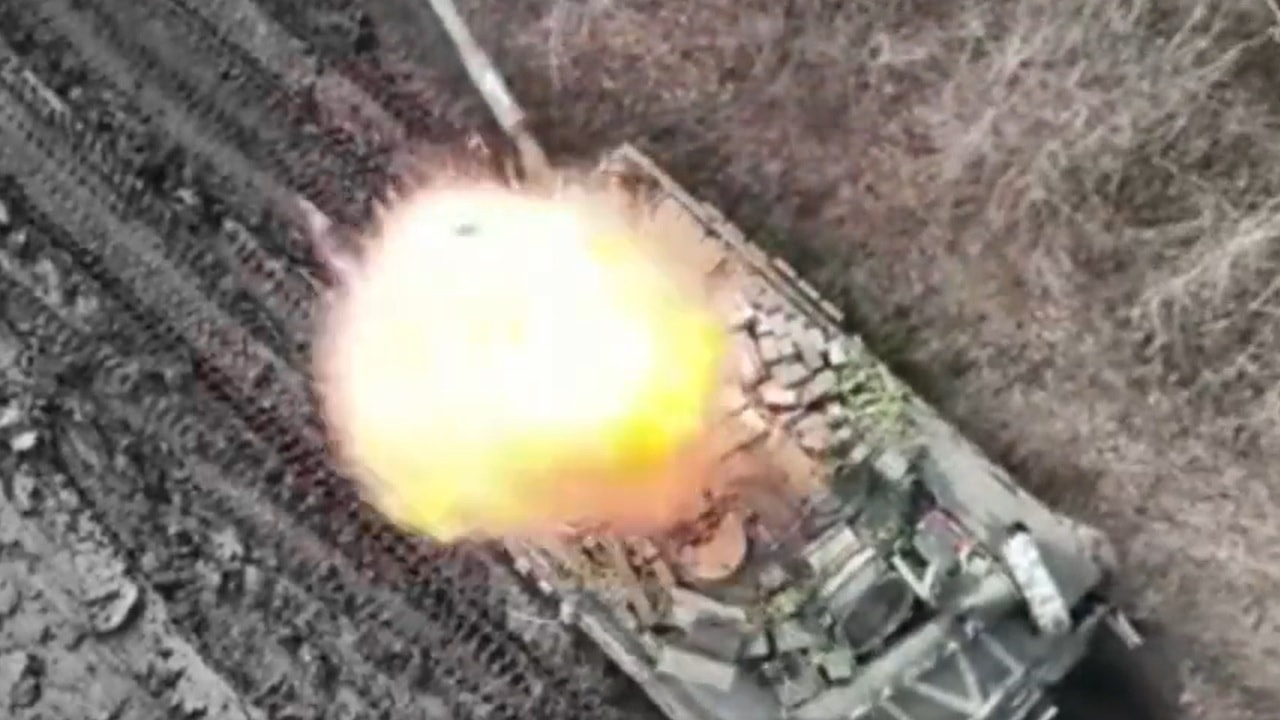Russian-state media outs have notoriously fueled the Kremlin’s well-oiled propaganda machine since the onset of the Ukraine invasion.
This week, the Sputnik news outlet argued that Russia’s T-80 main battle tank (MBT) is helping its troop continue to “destroy the enemy in the Bakhmut region, restrain the actions of Ukrainian forces and cover the assault groups from the flanks.” According to Russia’s Defense Ministry, the T-80 has significantly aided its offensive war effort.
While the Kremlin frequently purports that its premiere armored vehicle is a force to be reckoned with, in reality the T-80 has not lived up to the hype. Ukraine Weapons Tracker uploaded footage last month depicting the destruction of a T-80 following a catastrophic ammunition detonation.
This was not the first instance one of these tanks was taken out. In fact, the London-based International Institute for Strategic Studies estimated that nearly two-thirds of Russia’s T-80 inventory has been destroyed over the last fourteen months of battle.
A brief history of the T-80 tank
The T-80 MBT was initially developed to replace some of the Soviet Union’s aging tanks. While the tank superficially appears similar to the T-72, the T-80’s designs are largely based on the T-64, which was developed by the Morozov Design Bureau in earlier years.
The T-80’s gas turbine engine and suspension components are just two of the ways the tank surpasses the capability of the T-64. The T-80 is fitted with the same 125mm smoothbore main gun as the T-72.
As detailed by a 1995 Threat Update from the U.S. Forces Command OPFOR Training Program, “The T-80 fires the same rounds as the T-64B and T-72. These ammunition types include Frag-HE fin-stabilized (FS), HEAT-FS, and HVAPFSDS. With the AT-8/SONGSTER, the T-80 can range targets out to 4,000 meters. The T-8OUD variant is equipped to fire the AT-11/SNIPER (Russian nickname Svir) laser beam-riding ATGM.”
Size-wise, the T-80 is considered a lightweight compared to near-peer tanks. Weighing in at around 45 tons, the Russian MBT is much smaller than the 70-ton U.S. Abrams. With a smaller frame, the T-80 is more vulnerable to incoming fire than its heftier counterparts.
On the other hand, the T-80 is easily mobile and can perhaps traverse through tougher terrain. Despite its frame, the T-80 features other protection measures.
The T-80U variant sports a gas-turbine engine, improved heat insulated roof, engine-transmission ventilation, explosive reactive armor and cooling system.
Army Technology further outlines the tank’s fire control and observation: “The tank fire control system is the 1A42, which includes a 1V517 ballistic computer, two-axis electrohydraulic weapon stabilizer, and a rangefinder sight stabilized on two axis, as well as a GPK-59 hydro-semi compass azimuth indicator, and an azimuth indicator for the turret rotation. This system permits firing on the move.”
An overview of the T-80’s track record in combat
Prior to the Ukraine invasion, Russia deployed its T-80 MBTs in the First Chechen War. Despite Moscow’s exaggerated remarks about the tanks’ capabilities, the T-80 performed abysmally against the Chechen-launched rocket-propelled grenades.
The Russian tank has not performed much better in Kyiv. Some Russian soldiers have even left their T-80s behind, not given the right tools and training to properly maintain the MBT.
As Ukraine’s counter-offensive approaches, the Kremlin should worry about the influx of advanced Western-MBTs bound to hit Kyiv.
MORE: The War in Ukraine Is About to Explode
MORE: Does Putin Have Cancer?
Maya Carlin, a Senior Editor for 19FortyFive, is an analyst with the Center for Security Policy and a former Anna Sobol Levy Fellow at IDC Herzliya in Israel. She has by-lines in many publications, including The National Interest, Jerusalem Post, and Times of Israel. You can follow her on Twitter: @MayaCarlin.

